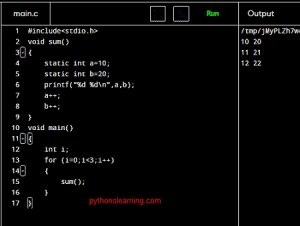We know that most of the real time application supported python languages so in this article we will see some real time embedded projects.
Table of Contents
But why we use python with embedded ?
Python is a high-level, interpreted programming language which is known for its dynamic semantics. This object-oriented language has become very popular among the developers due its high-level built-in data structures. Rapid Application Development has become a lot simpler due to the use of Python. This is because of Python’s easy to learn syntax and readability, which further reduces the maintenance cost. Python encourages code reuse and modularity with its modules and packages. As a result, many developers find it easy to code their solutions in Python compared to other languages.
Can Python be used for system programming?
It is also noticeable that Python is being adopted on several platforms like Linux, Windows and even on single board computers like Raspberry Pi. Python has also gained importance as a scripting to connect existing components together. It is also used in various IoT applications due to its ease of development. Python has, thus proven to be so powerful that it has broadened horizons to be used in various embedded systems.
Can I use Python for microcontrollers?
Generally, embedded systems are microprocessor-based computer hardware systems. They have a software that is specifically designed to perform a function. These systems are either as independent systems or as parts of a large system. In short, an embedded system is an integrated circuit designed to carry out some real-time operations. All of this can be done using Python very quickly and efficiently.
Even though Python is a little slower than C or other programming languages, there are several reasons to select Python over them. First one being simplicity. Python is easy to write and readable. Next reason is code reusability which further reduces chances of errors. And the main reason is that, it is easy to learn for beginners and a powerful tool for the experienced ones. Thus, Python is a great choice for developing embedded systems.
Some Embedded Real time application using python
There are various ways in which Python can be integrated with Real Time Embedded systems. Some of them are discussed below:

1. Automating build systems
Python can be used with continuous integration frameworks for automating build systems. It can be utilized to copy files and clean them up before and after building.
2. Automating tests
Python is a scripting language which can be used to trigger and test various parameters of IUT (Implementation under test). These scripts focus on exercising various parameters of the system by using regression testing. Such tests make it easier to test the system continuously and discover any bugs immediately.
3. Parsing logs
Log files can be parsed using Python. This can come up with high-level log files which can be understood even by a person who is not familiar with the exact development of the system.
4. Device control and debugging
Many embedded systems have the requirement to control bus analyzer and send messages. Some tools may also require the developer to write program to develop scripts and to control the tool as well. This when Python saves the day for many developers. This scripting language also makes debugging a program very simple.
5. Data analysis
Nowadays, data analysis has become an integral factor for solving any real time problem. Python comes in handy for receiving and retaining sensitive data obtained from the embedded systems. It further stores the data and uses it for local analysis.
Summary :
In this article we saw Embedded Real time application using python so about this article you have any query then free to ask me
Also read :
Post Credit : Sanjana Sawant
